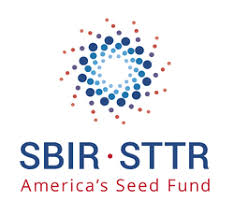
SBIRs & Grants
How to utilize government grants and SBIR funding with a vision for commercialization.
Self-Assessment Checklist
Answer a few questions to see if you are correctly and efficiently handling your SBIR grants and contracts.
Each year the US government provides over $5B in grants to small businesses and universities to engage in innovative research and development projects. An SBIR (Small Business Innovation Research) can be an excellent source of non-dilutive seed capital to jumpstart your business. These grants are designed to stimulate technological innovation and economic growth. Managing these grants involves not only doing the research but also effectively managing the funding and complying with stringent reporting and accountability requirements. Utilizing fractional resources and managed services can be an excellent approach to building the right team required to deliver.
AtWork Outsourcing & Managed Services for SBIRs
across functions like accounting, HR, finance, contract and project management.
What are SBIR Grants?
 The Small Business Innovation Research (SBIR) program in the United States is a competitive initiative aimed at encouraging small businesses to engage in federal research and development (R&D) with a focus on potential commercialization. Participating federal agencies, such as NIH, NSF, DoD, NASA, and DoE, each contribute to the program with their own priorities. The SBIR program follows a three-phase structure, beginning with a feasibility study (Phase I) and progressing through research and development (Phase II) to eventual commercialization (Phase III). To be eligible, businesses must meet the size standards set by the U.S. Small Business Administration and be American-owned and independently operated. The program places a strong emphasis on commercialization, with applicants required to demonstrate a clear path to market for their innovations.
The Small Business Innovation Research (SBIR) program in the United States is a competitive initiative aimed at encouraging small businesses to engage in federal research and development (R&D) with a focus on potential commercialization. Participating federal agencies, such as NIH, NSF, DoD, NASA, and DoE, each contribute to the program with their own priorities. The SBIR program follows a three-phase structure, beginning with a feasibility study (Phase I) and progressing through research and development (Phase II) to eventual commercialization (Phase III). To be eligible, businesses must meet the size standards set by the U.S. Small Business Administration and be American-owned and independently operated. The program places a strong emphasis on commercialization, with applicants required to demonstrate a clear path to market for their innovations.
The critical stages of SBIR Phase I and II further delve into the program's framework. Phase I involves a small grant for feasibility research or initial development, serving as a proof-of-concept stage. Successful completion of Phase I allows businesses to move on to Phase II, where more substantial funding supports further R&D efforts and the development of prototypes or detailed commercialization plans. Phase II projects typically last for two years and heavily emphasize bringing the technology or product to market. The competitive process for Phase II awards involves detailed proposals, evaluation by review panels, and varying funding amounts depending on the agency and project scope. Additionally, many SBIR programs offer commercialization assistance, such as mentorship and guidance on navigating regulatory processes, contributing to the overall success of small businesses in bringing their innovations to market. SBIR Phase II plays a crucial role in fostering innovation, stimulating economic growth, and supporting the development of new solutions across diverse industries.
Applying for SBIR Funding
Applying for Small Business Innovation Research (SBIR) funding presents a challenging yet rewarding opportunity for small businesses aiming to advance and commercialize their groundbreaking technologies or products. The SBIR program consists of three phases: Phase I involves feasibility studies and proof of concept, Phase II focuses on further development and testing, and Phase III centers on commercialization. To apply for SBIR funding, small businesses must meet eligibility criteria defined by the Small Business Administration, identify relevant federal agencies aligning with their project goals, and meticulously develop a comprehensive proposal covering project details, team qualifications, budget, and commercialization plans.
The application process involves registering with SAM and Grants.gov, adhering to agency-specific guidelines, and submitting the proposal through the agency's online portal. After submission, a rigorous peer review assesses the proposal's scientific merit and commercial potential. Upon notification of funding decisions, successful applicants execute their projects according to the proposed plan, maintaining compliance with agency requirements. The ultimate goal is commercialization, with agencies expecting SBIR projects to demonstrate a clear path toward bringing the innovation to the marketplace.
Learn More About Applying for SBIR Funding
Funding Amounts for SBIR Phases
 The Small Business Innovation Research (SBIR) program offers Phase I and Phase II grants with varying funding amounts across federal agencies. Agencies such as the National Institutes of Health (NIH), National Science Foundation (NSF), Department of Defense (DoD), National Aeronautics and Space Administration (NASA), and Department of Energy (DOE) have their own funding guidelines. For instance, NIH Phase I awards can reach up to $225,000, while NASA Phase II awards may provide up to $750,000. However, these are general estimates, and funding limits may differ. Applicants should consult specific solicitations for accurate and current information, considering potential changes since the last update in January 2022.
The Small Business Innovation Research (SBIR) program offers Phase I and Phase II grants with varying funding amounts across federal agencies. Agencies such as the National Institutes of Health (NIH), National Science Foundation (NSF), Department of Defense (DoD), National Aeronautics and Space Administration (NASA), and Department of Energy (DOE) have their own funding guidelines. For instance, NIH Phase I awards can reach up to $225,000, while NASA Phase II awards may provide up to $750,000. However, these are general estimates, and funding limits may differ. Applicants should consult specific solicitations for accurate and current information, considering potential changes since the last update in January 2022.
Beyond funding variations, some agencies may impose matching requirements, necessitating a certain percentage of cost-sharing from the small business. The application process involves meeting eligibility criteria, selecting relevant agencies, crafting a comprehensive proposal, registering with SAM and Grants.gov, following agency-specific guidelines, and engaging with program managers. Staying informed about the latest updates and requirements is crucial for a competitive chance at securing SBIR grant funding and achieving successful commercialization.
Learn More About Funding Amounts for SBIR Grants
More SBIR Funding Beyond Phase II
Beyond the Small Business Innovation Research (SBIR) Phase II, opportunities for additional funding abound. While SBIR Phase II is the final phase of the program, Phase III marks the transition into a commercialization phase. During Phase III, small businesses are encouraged to explore non-SBIR funding sources, such as government contracts or private sector investments, leveraging their SBIR-funded research for further support. The Small Business Technology Transfer (STTR) Program, similar to SBIR, necessitates collaboration with a research institution and offers funding for commercialization efforts after completing STTR Phase II.
Apart from government programs, various federal and state grant initiatives cater to specific industries or technologies, requiring meticulous research for identification. Seeking funding from venture capital and angel investors is a common strategy for scaling operations. A successful SBIR Phase II project enhances attractiveness to investors. Small businesses can also explore corporate partnerships, licensing agreements, and government contracts for continued development. Additionally, participating in industry-related grants, competitions, and building a track record with SBIR/STTR awards can open doors to future funding opportunities. Strategic planning, tailored approaches to diverse funding sources, and active networking within the industry are essential elements for sustained financial support beyond SBIR Phase II.
Learn More About SBIR Funding Beyond Phase II
SBIR Commercialization
 Commercializing technology developed through an SBIR grant project involves several essential steps. Initially, before even applying for the grant, conduct comprehensive market research to gauge potential demand, identifying target industries, customer segments, and competitors. Validate the technology's value proposition by obtaining feedback from potential customers and industry experts, ensuring a genuine need for the solution. If applicable, consider filing for a patent to protect intellectual property, providing a competitive edge. Develop a thorough business plan outlining the commercialization strategy, including market entry, revenue model, pricing, and sales and marketing plans, while defining target customers and addressing their pain points.
Commercializing technology developed through an SBIR grant project involves several essential steps. Initially, before even applying for the grant, conduct comprehensive market research to gauge potential demand, identifying target industries, customer segments, and competitors. Validate the technology's value proposition by obtaining feedback from potential customers and industry experts, ensuring a genuine need for the solution. If applicable, consider filing for a patent to protect intellectual property, providing a competitive edge. Develop a thorough business plan outlining the commercialization strategy, including market entry, revenue model, pricing, and sales and marketing plans, while defining target customers and addressing their pain points.
Subsequently, evaluate funding needs for commercialization, exploring sources beyond SBIR funds, such as venture capital, angel investors, grants, loans, or strategic partnerships. Continue refining the technology through prototyping and testing, ensuring it meets industry standards and customer requirements. Adhere to regulatory compliance if applicable, and seek strategic partnerships for distribution, market access, and credibility. Develop a robust sales and marketing strategy, preparing for scaling up production as demand grows. Embrace continuous improvement based on customer insights and market changes, considering long-term goals and formulating an exit strategy. Comply with SBIR reporting requirements and seek advice from mentors, business advisors, and legal professionals experienced in technology startups, acknowledging that successful commercialization requires time, effort, adaptability, and persistence.
Learn More About SBIR Commercialization
Reporting Requirements for SBIR Grants
The Small Business Innovation Research (SBIR) program, a U.S. government initiative, plays a pivotal role in fostering innovation among small businesses by providing funding for research and development (R&D) projects. Divided into three phases, the program supports the feasibility evaluation (Phase I), further development (Phase II), and marketplace commercialization (Phase III) of innovative technologies and products. Reporting requirements for SBIR grants vary across phases. Phase I demands a final technical report demonstrating progress and justifying Phase II continuation, while Phase II involves interim and final reports assessing the project's potential for commercialization. In Phase III, businesses focus on a commercialization plan and periodic progress reports, vital for maintaining eligibility and showcasing R&D impact. Specific reporting requirements differ among federal agencies administering SBIR grants, necessitating careful review of award agreements for compliance.
SBIR awardees are obligated to submit comprehensive progress reports, financial reports, and commercialization plans to the funding agency. The reports include project overviews, milestones and objectives, work plans, personnel details, financial summaries, challenges and mitigation strategies, future plans, and relevant appendices. Financial reports must adhere to agency-specific requirements, encompassing budget reconciliations, invoices, subcontractor information, indirect cost rate calculations, audited financial statements, financial narratives, and compliance certifications. A commercialization plan outlines marketing strategies, target markets, and potential partners or customers. Additionally, SBIR awardees may need to report on intellectual property management and submit a final technical report at the project's conclusion. Compliance with federal regulations, site visits, and audits further ensure accountability. Failure to meet reporting obligations can lead to award termination or future ineligibility, emphasizing the importance of staying informed and up-to-date on evolving guidelines. Regular communication with the funding agency's program manager is crucial for ensuring ongoing compliance.
Learn More About SBIR Reporting Requirements
Using Subcontractors on SBIR Grants
 In the realm of Small Business Innovation Research (SBIR) grants, subcontracting work to other organizations is permissible, but the rules governing this practice may vary among the SBIR agencies. Small businesses engaging in SBIR grants should thoroughly review their respective agency's guidelines on collaboration and subcontracting to fulfill specific project needs. A crucial aspect involves developing a subcontracting plan with careful consideration of eligibility, limitations, subcontractor selection, oversight, reporting, cost considerations, and intellectual property (IP) considerations.
In the realm of Small Business Innovation Research (SBIR) grants, subcontracting work to other organizations is permissible, but the rules governing this practice may vary among the SBIR agencies. Small businesses engaging in SBIR grants should thoroughly review their respective agency's guidelines on collaboration and subcontracting to fulfill specific project needs. A crucial aspect involves developing a subcontracting plan with careful consideration of eligibility, limitations, subcontractor selection, oversight, reporting, cost considerations, and intellectual property (IP) considerations.
The eligibility criteria for SBIR grants dictate that the primary awardee must be a small business, and the majority of the work must be executed by that business. Nevertheless, subcontracting is allowed to meet specific project requirements. Understanding the limitations on subcontracting, which vary by agency, is essential, including the percentage of work that can be subcontracted. Small businesses should carefully select subcontractors, ensuring they possess the necessary expertise and meet agency-specific requirements. While subcontracting is permitted, the small business is responsible for the overall management and performance of the SBIR project, necessitating clear communication, budgeting, and adherence to reporting requirements. Additionally, attention to IP considerations and adherence to agency-specific guidelines is crucial for successful project execution within the SBIR program.
Learn More About Using Subcontractors on SBIR Grants
SBIR Grants vs. Other Government Programs
The Small Business Innovation Research (SBIR) program stands out as a distinctive government funding initiative tailored to support small businesses engaged in research and development (R&D) activities. Unlike other government R&D funding programs, SBIR grants exclusively target small businesses, employing a structured three-phase approach that includes development and emphasizes commercialization in its final phase. Notably, SBIR grants often provide larger funding amounts and extended project durations compared to their counterparts in Phase I and II.
A key aspect that differentiates SBIR from other programs lies in its competitive nature. SBIR awards are granted through a competitive process, evaluating proposals based on technical merit, commercial potential, and other criteria. Additionally, SBIR grants frequently incorporate intellectual property (IP) rights provisions favorable to small businesses, allowing them to retain ownership of developed technologies. The administering agencies, specific focus areas, and lack of mandatory matching funds further distinguish SBIR grants from other government R&D funding programs. However, it's essential for small businesses to carefully review the requirements and priorities of each program to align with their unique research and development needs.
Learn More About SBIR Grants Compared to Other Federal Programs
Learn More About AtWork Systems
AtWork Systems is an Arlington, Virginia based software development company. Its principals have decades of experience doing business with and working for federal, state, and local government. They developed OneLynk as a configurable and scalable business operating platform that digitizes and optimizes processes while providing just in time business intelligence for decision making. OneLynk contains a suite of easily configurable web applications for automating and monitoring business transactions, including: human capital management, finance, timekeeping and expense management, procurement, contracts and project management, payroll services and more. OnyLynk provides the functionality required to support all Phases of an SBIR grant. We also provide accounting and project managed services as needed. Check it out at www.AtWorkSys.com and see for yourself!
